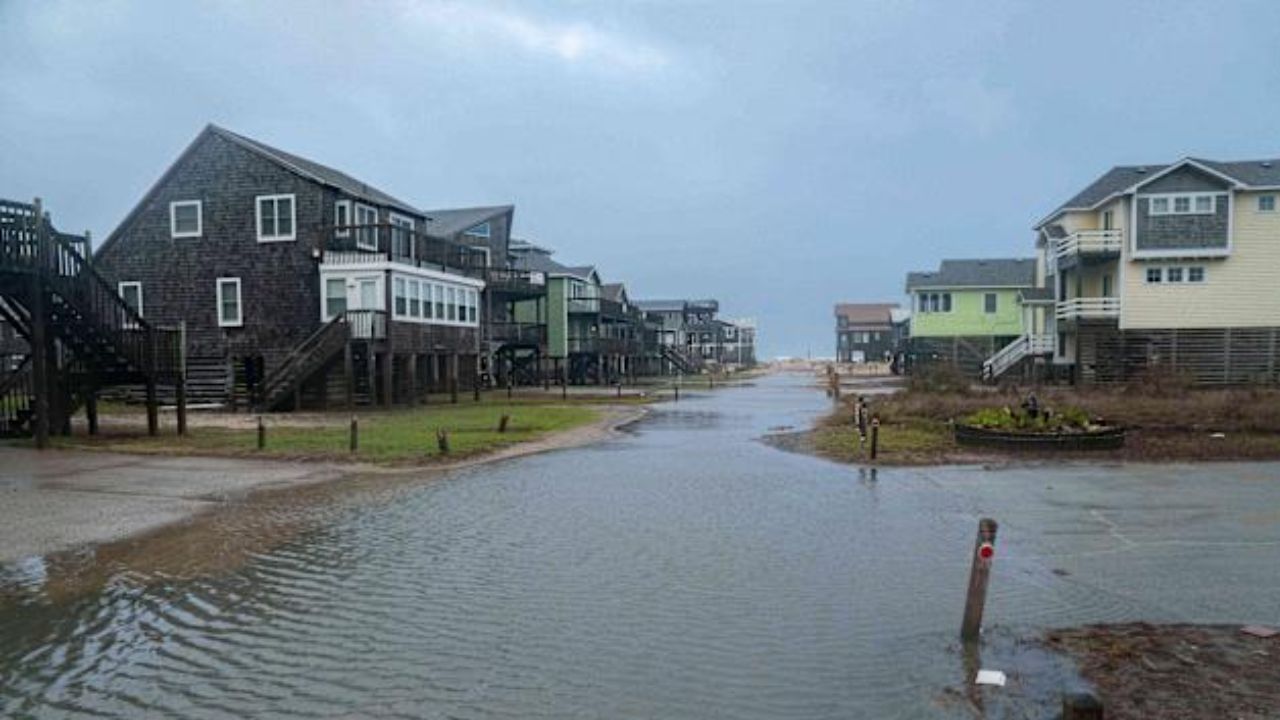Bethel, Alaska — Coastal communities in western Alaska are facing a severe weather crisis after the remnants of Typhoon Halong battered the region with hurricane-force winds exceeding 100 mph and catastrophic flooding over the weekend. The storm’s impact has prompted urgent rescue operations, mass evacuations, and a statewide disaster declaration expansion by Governor Mike Dunleavy.
Powerful Storm Slams Alaska’s Coast
The remnants of Typhoon Halong, which earlier churned through the Pacific, transformed into a powerful coastal storm as it entered the Bering Sea on Sunday. Packing sustained winds of 60 mph and gusts over 100 mph, the system brought massive waves and a dangerous storm surge to coastal communities along the Kuskokwim Delta and regions south of the Bering Strait.
Local storm reports indicate widespread flooding and extensive property damage. Many homes in small villages were submerged or surrounded by floodwaters, according to photos released by the Alaska Division of Homeland Security and Emergency Management.
Rescues Underway as Residents Trapped by Floodwaters
Emergency responders and volunteers are working around the clock as several residents remain unaccounted for or trapped inside their homes. According to Alaska Public Media, flooding in communities across the Yukon-Kuskokwim Delta has left entire neighborhoods cut off.
The U.S. Coast Guard was deployed to the villages of Kipnuk and Kwigillingok on Sunday to assist with search and rescue operations, while helicopters and boats were used to reach isolated residents.
Governor Expands Disaster Declaration
Governor Mike Dunleavy expanded Alaska’s state disaster declaration on Sunday to include Yupitt, Pribilof Islands, and Lower Kuskokwim Regional Education Attendance Areas, citing the “unprecedented impact” of the storm.
In a statement, Dunleavy emphasized that state resources are being mobilized to assist affected regions:
“Our priority is the safety and well-being of every Alaskan impacted by this devastating weather event. We are coordinating with federal and local agencies to ensure immediate relief and long-term recovery efforts.”
Red Cross and Emergency Teams Respond
The American Red Cross confirmed it has deployed response teams to multiple coastal villages, including Bethel, Kotzebue, Nome, Kipnuk, and Kwigillingok, to provide shelter, food, and emergency assistance to displaced residents.
Flooding has been particularly severe near Kotzebue Sound, where the tide gauge recorded 6.71 feet — more than 5 feet above normal levels, surpassing the major flood stage last Thursday. Officials report that storm surge flooding has persisted for several days, compounding the crisis.
Extreme Weather Warnings Remain in Effect
The National Weather Service (NWS) issued High Wind Warnings for Nunivak Island and the Kuskokwim Delta Coast, predicting gusts between 70 and 90 mph through Monday morning. For interior areas of the Kuskokwim Delta, wind speeds of up to 75 mph are expected, with heavy rain continuing to flood low-lying regions.
Meteorologists warn that flooding will likely continue through Monday, and a Flood Advisory remains active for the Kuskokwim River. The State Emergency Operations Center continues to monitor conditions, urging residents to avoid travel and move to higher ground if flooding worsens.
Read Also: Carolinas on Alert for Flooding and Beach Erosion as Powerful Nor’easter Forms
Ongoing Impact Across Western Alaska
Communities across the western coastline — including Bethel, Nome, and Kotzebue — are dealing with significant damage to roads, power lines, and homes. The extent of destruction is still being assessed, but officials expect weeks of cleanup and recovery ahead.
As the storm moves northward, experts caution that coastal erosion and glacial outburst flooding could continue to threaten Alaska’s vulnerable regions. A viral video shared from Juneau earlier this year showed a tree floating down the Mendenhall River during record flooding — a stark reminder of the increasing severity of Alaska’s climate-driven disasters.
Community Support and Recovery Efforts
Emergency shelters have been opened across affected regions, and the state government has activated multiple relief programs. Residents seeking help or updates can contact the Alaska Division of Homeland Security and Emergency Management or local tribal councils coordinating evacuation efforts.
Authorities continue to urge the public to stay informed through official channels as Typhoon Halong’s remnants gradually weaken but leave behind widespread devastation.
Have you or your family been impacted by the Alaska flooding? Share your story or photos in the comments at race-day-live.com to help raise awareness about ongoing rescue and recovery efforts.


 by
by 

